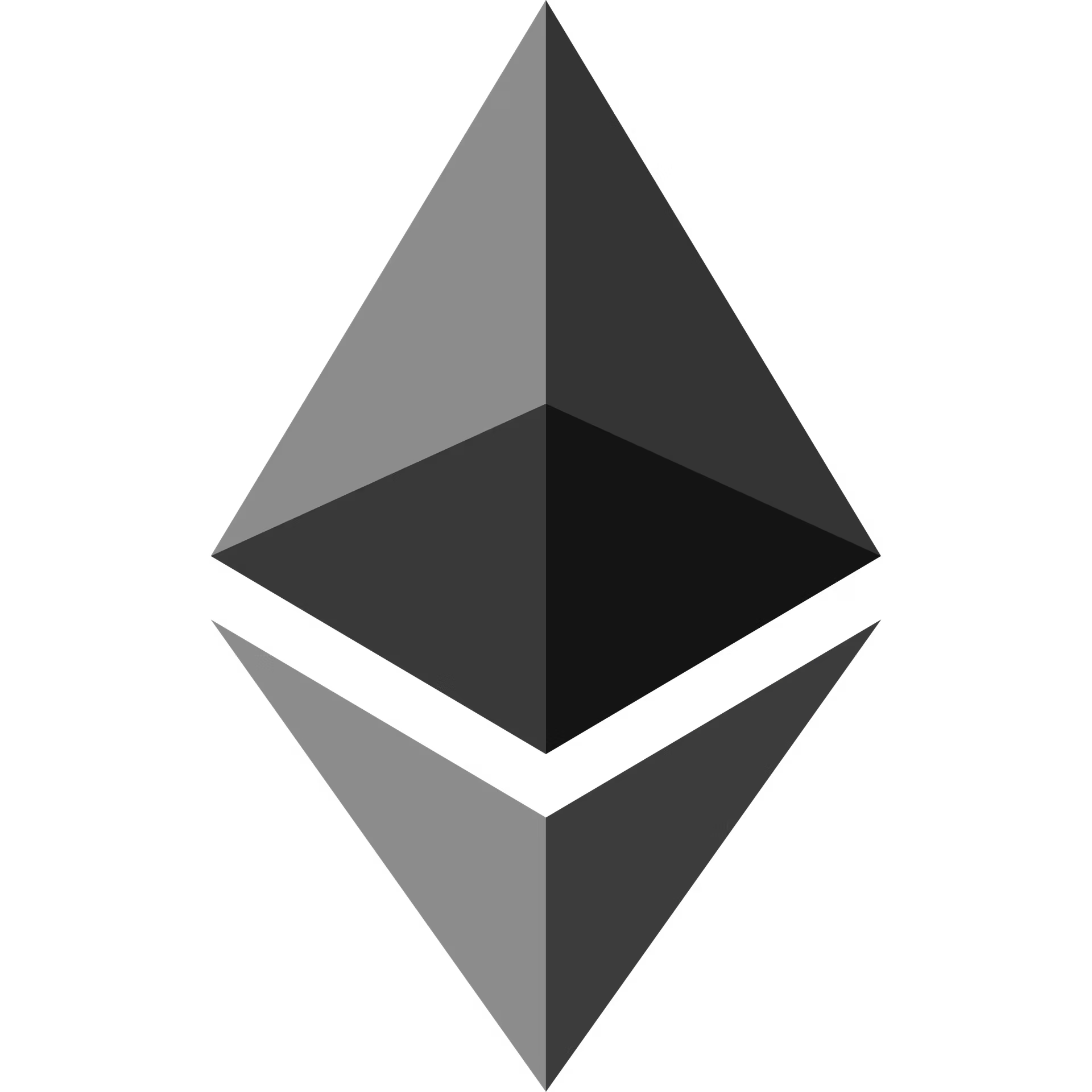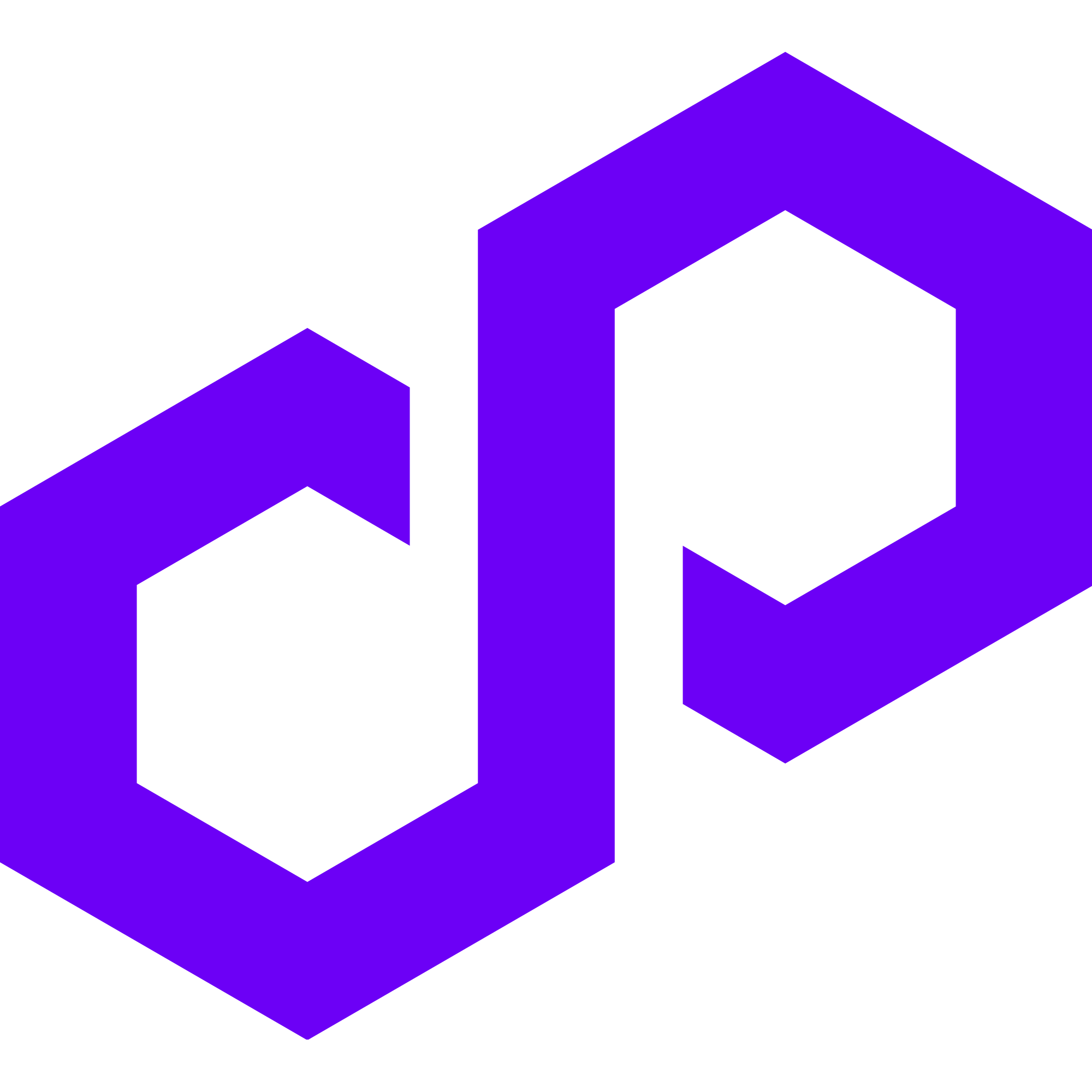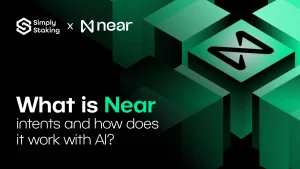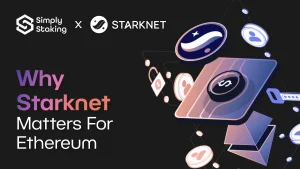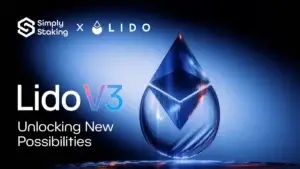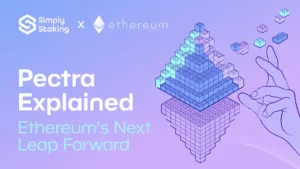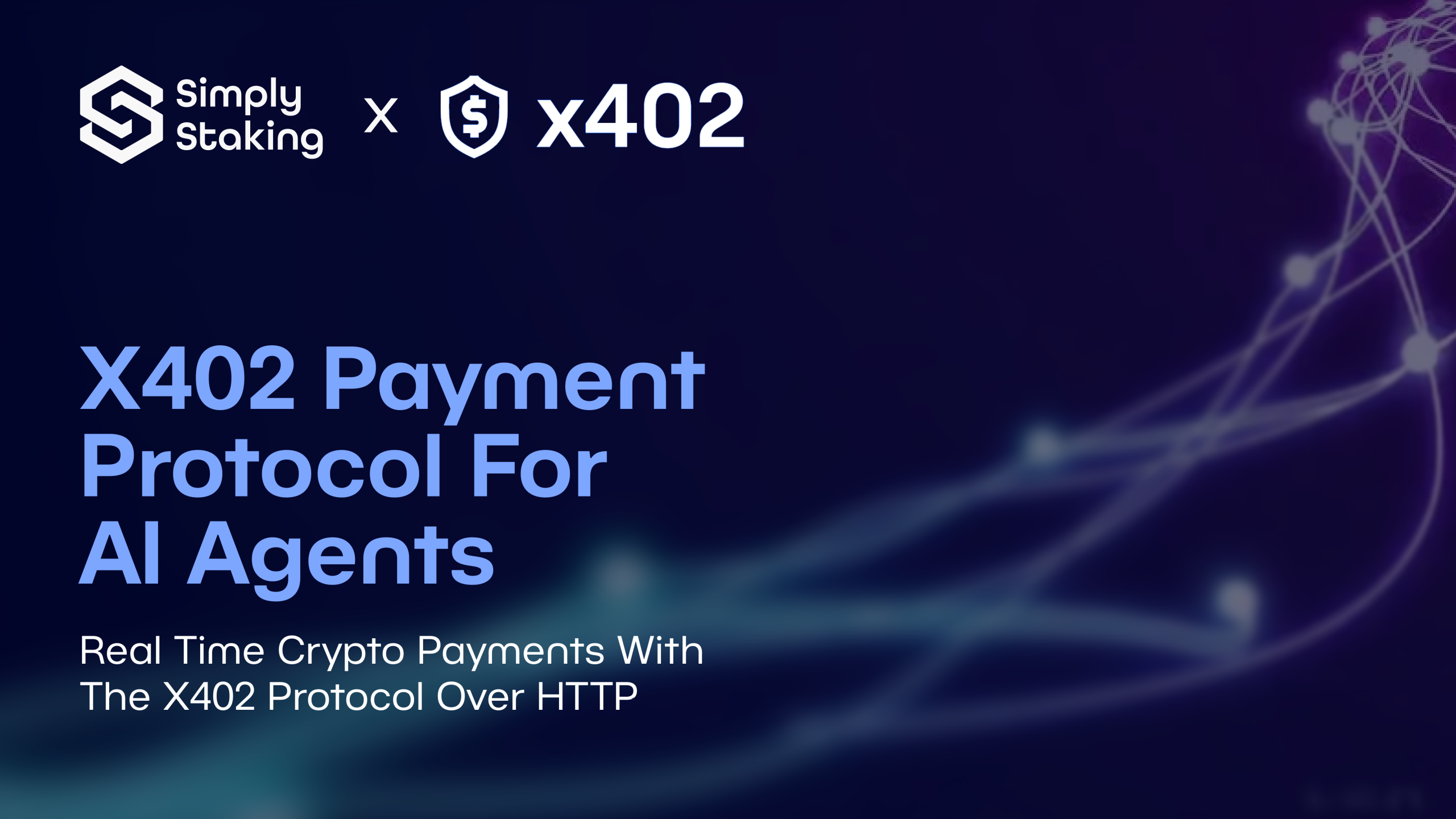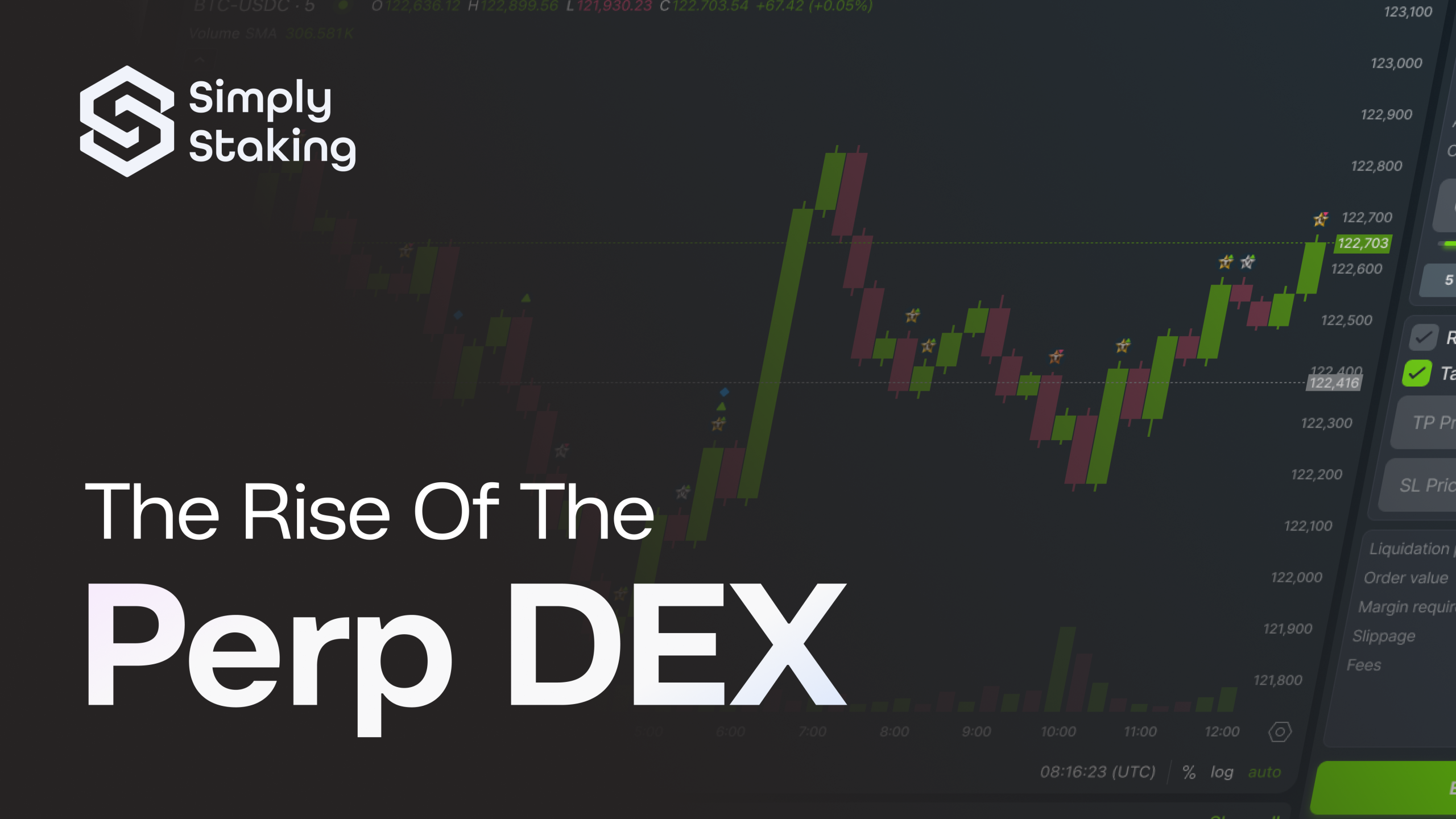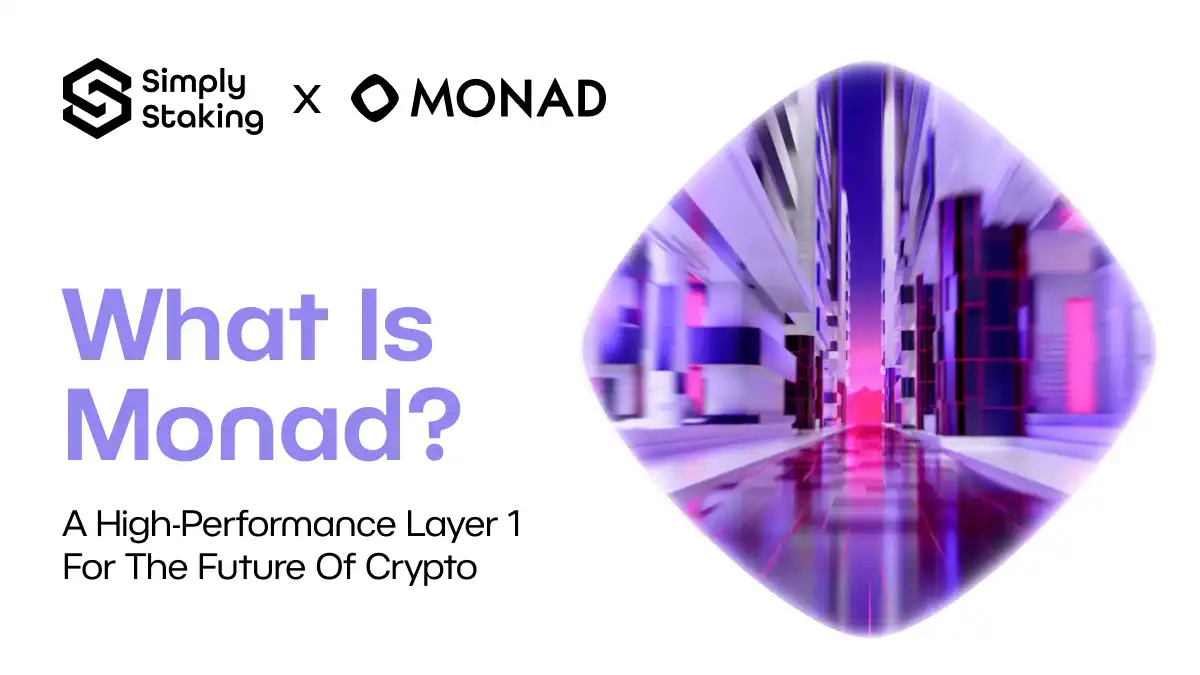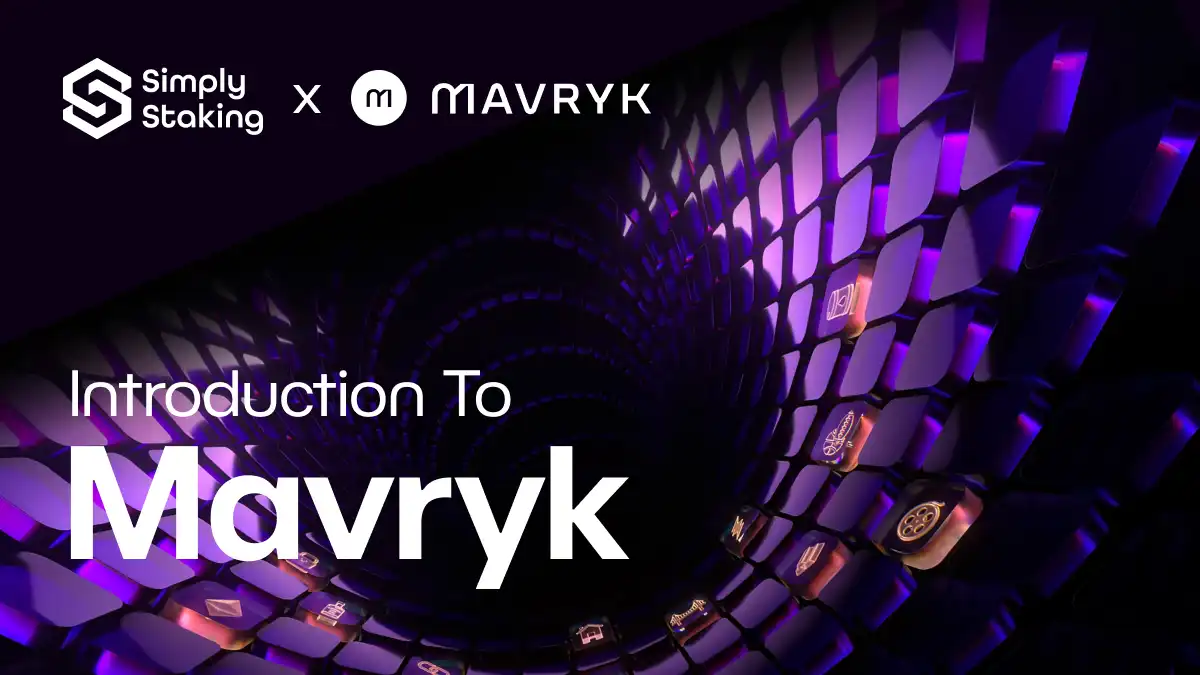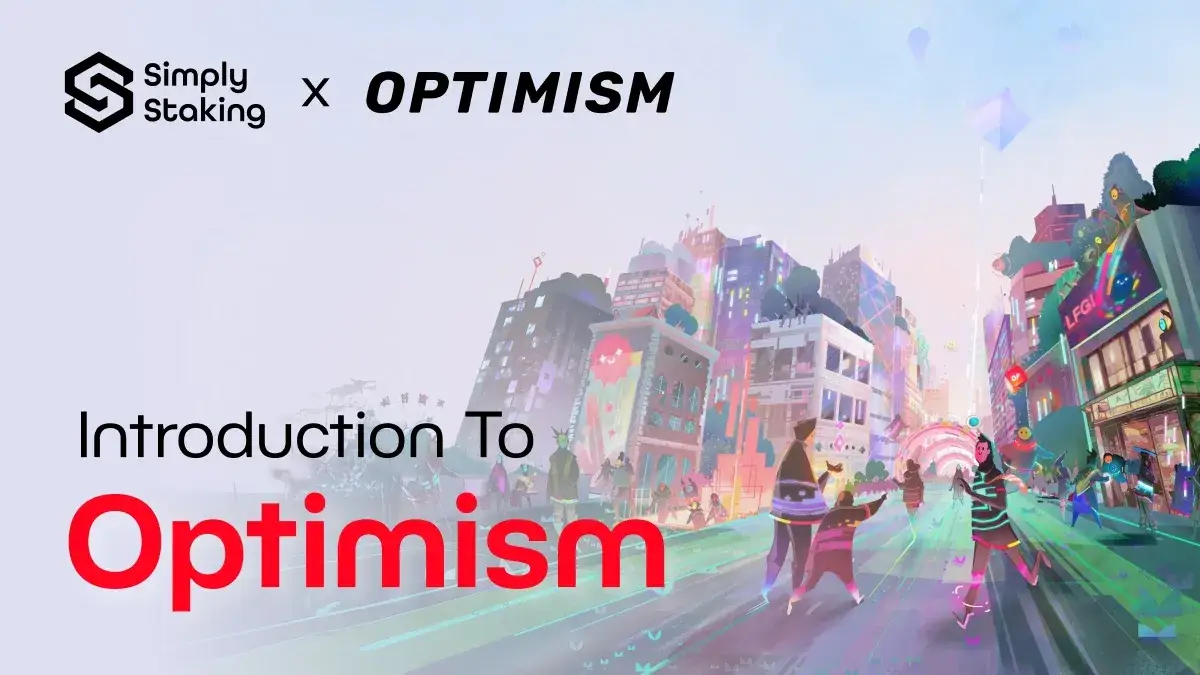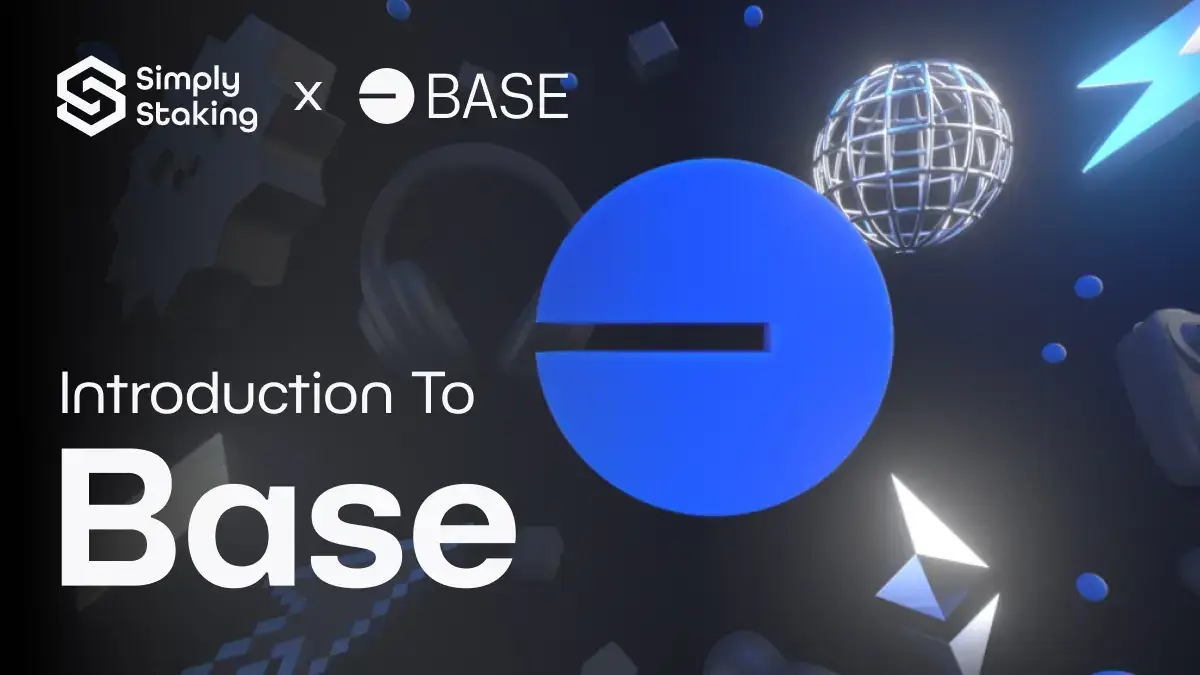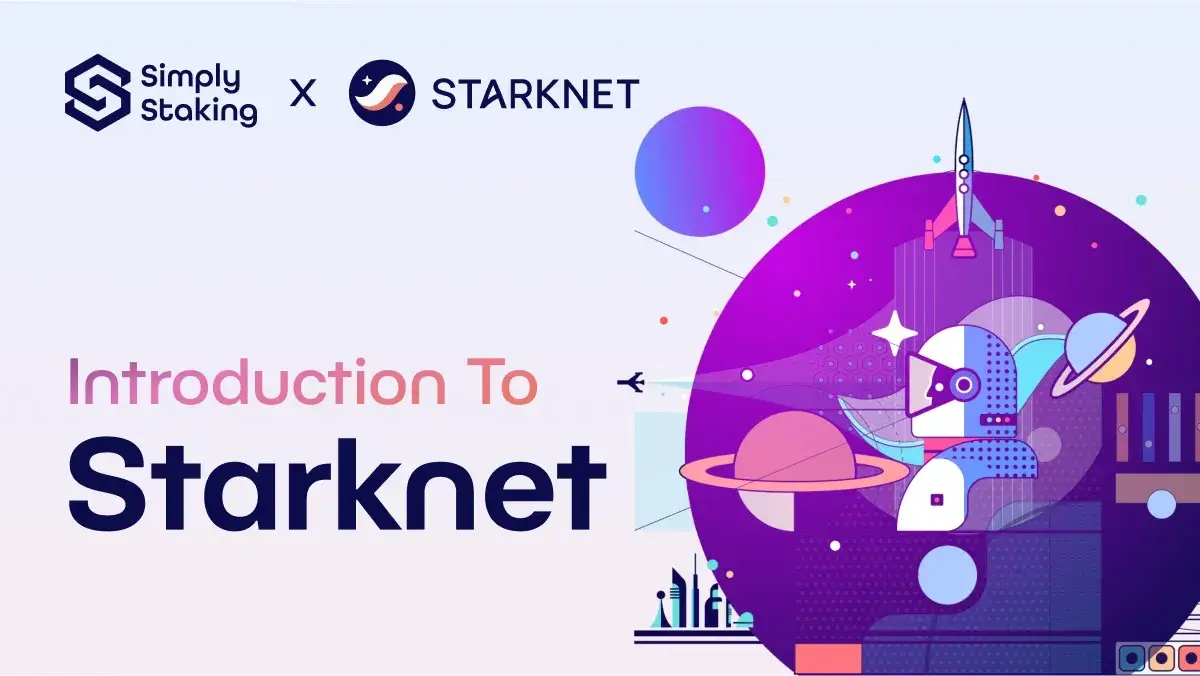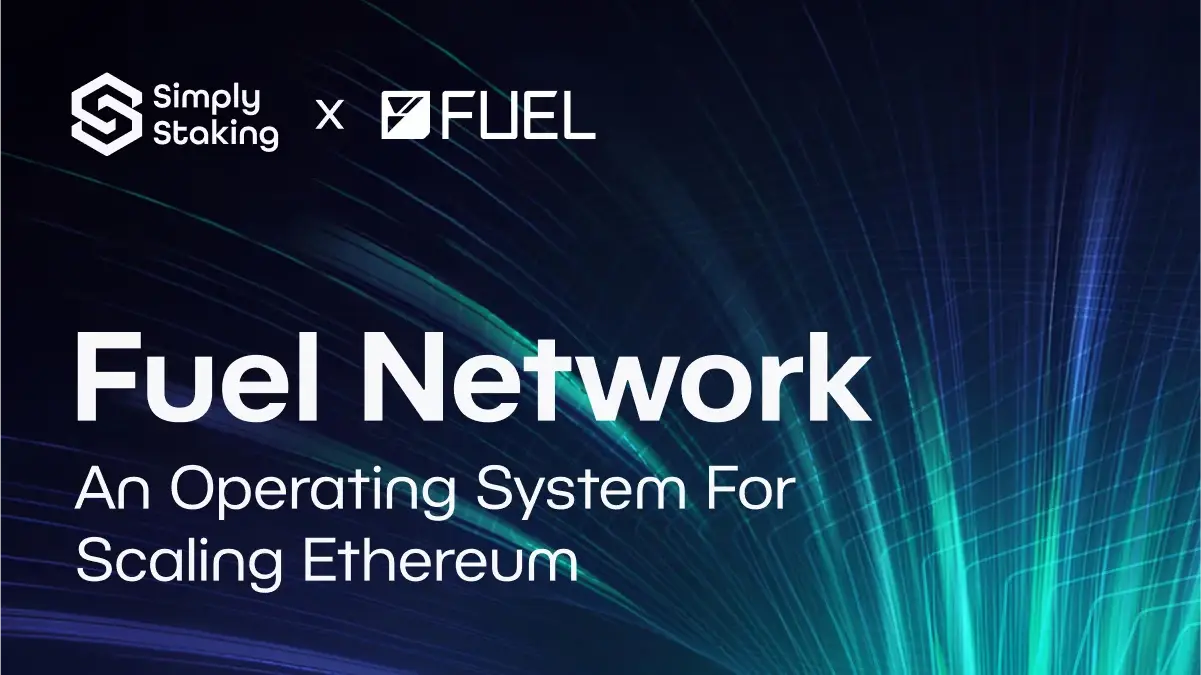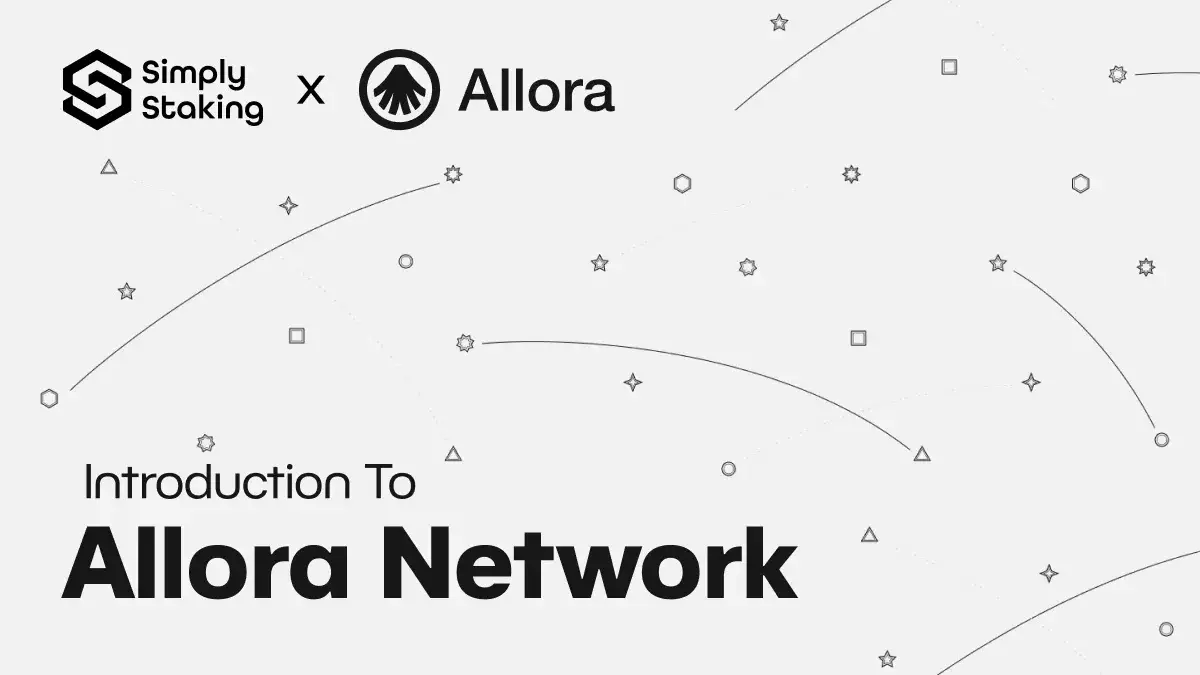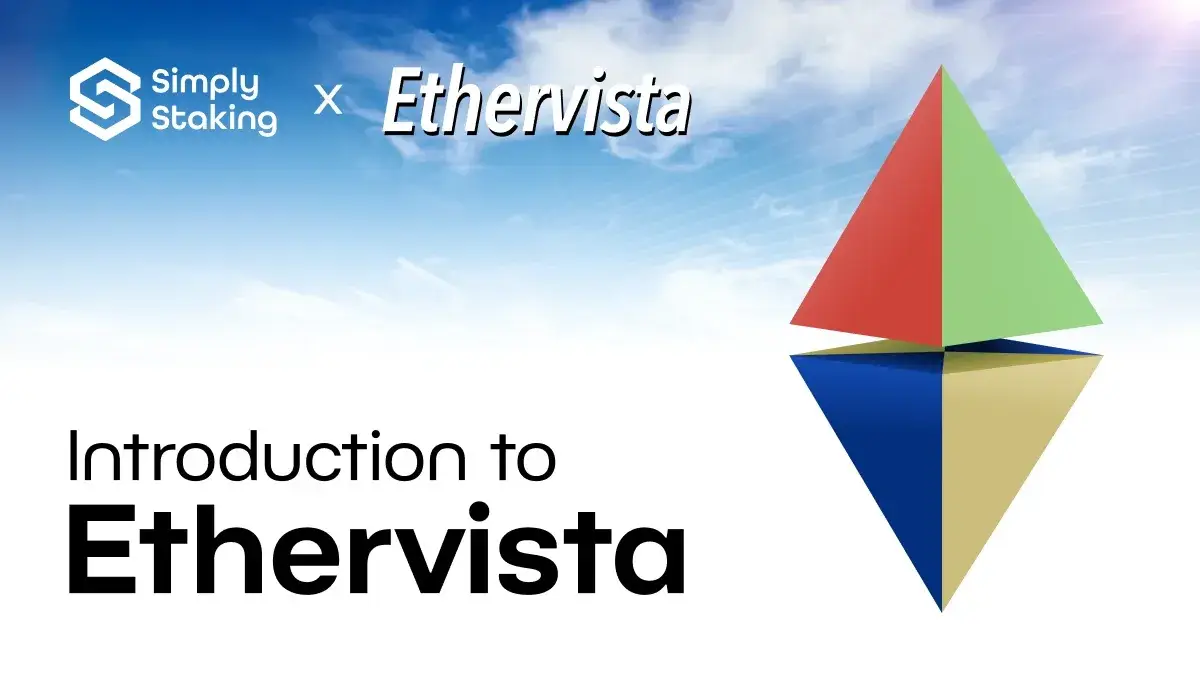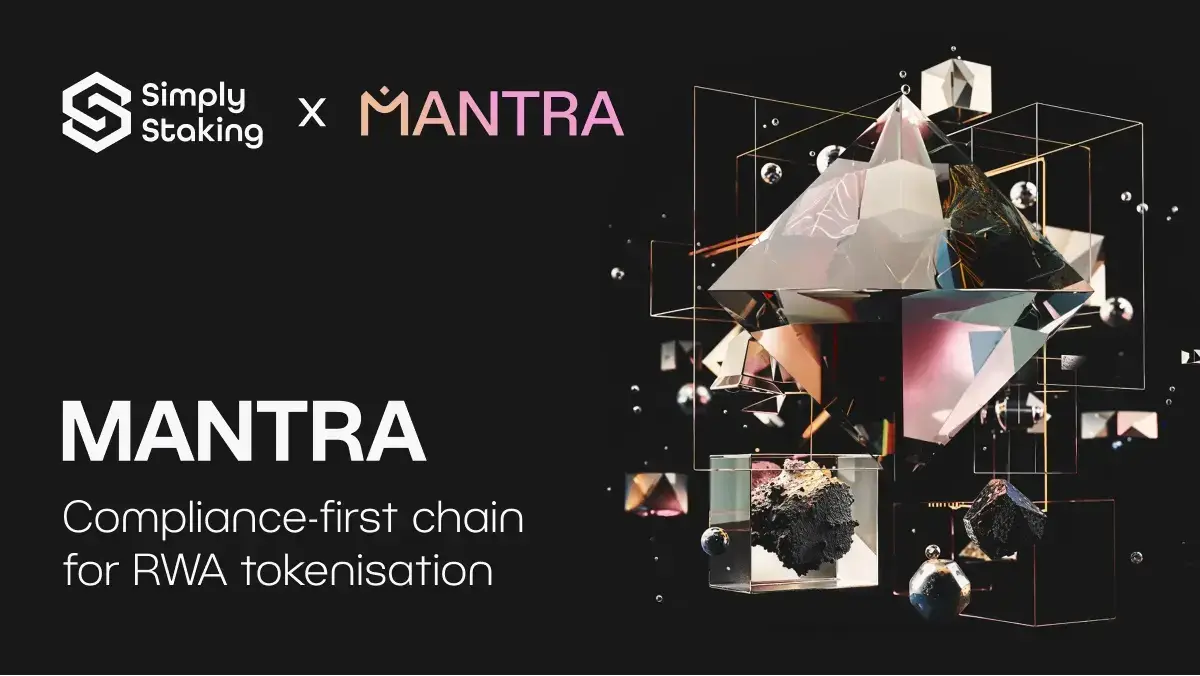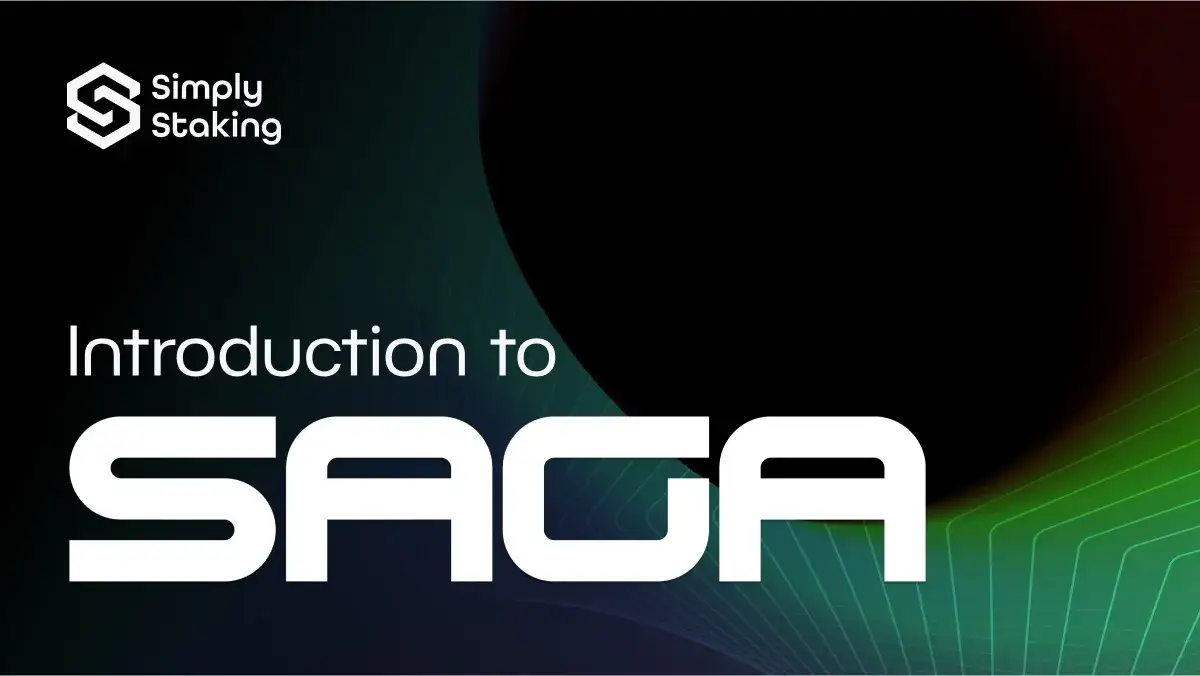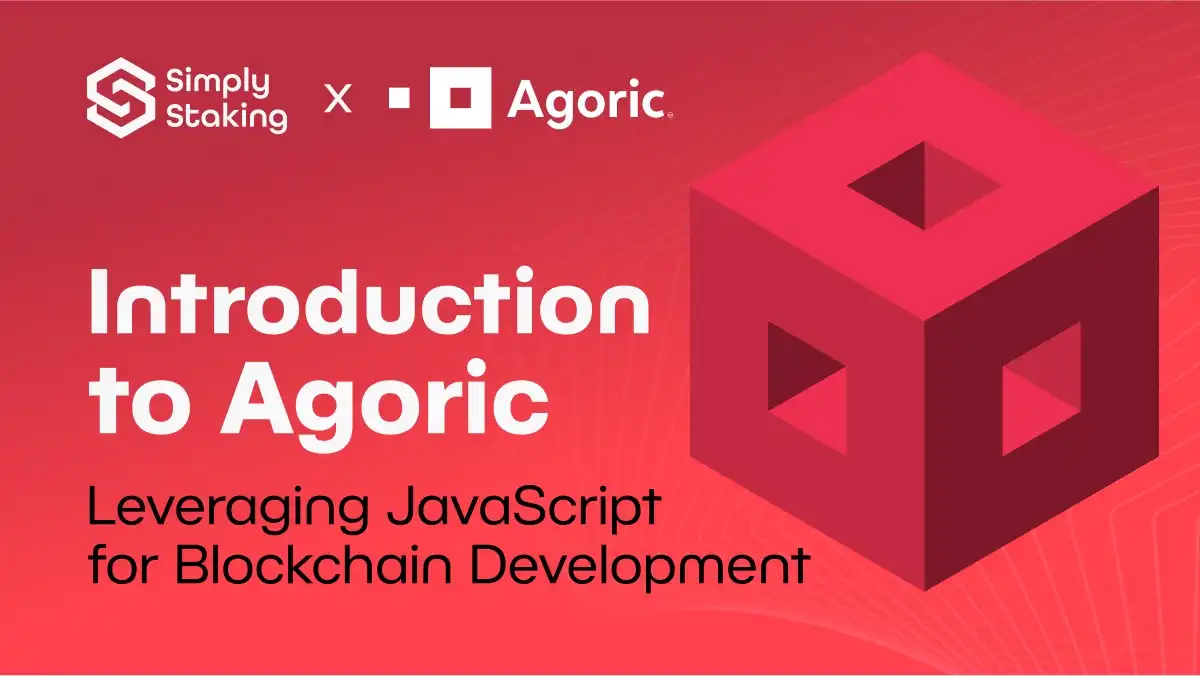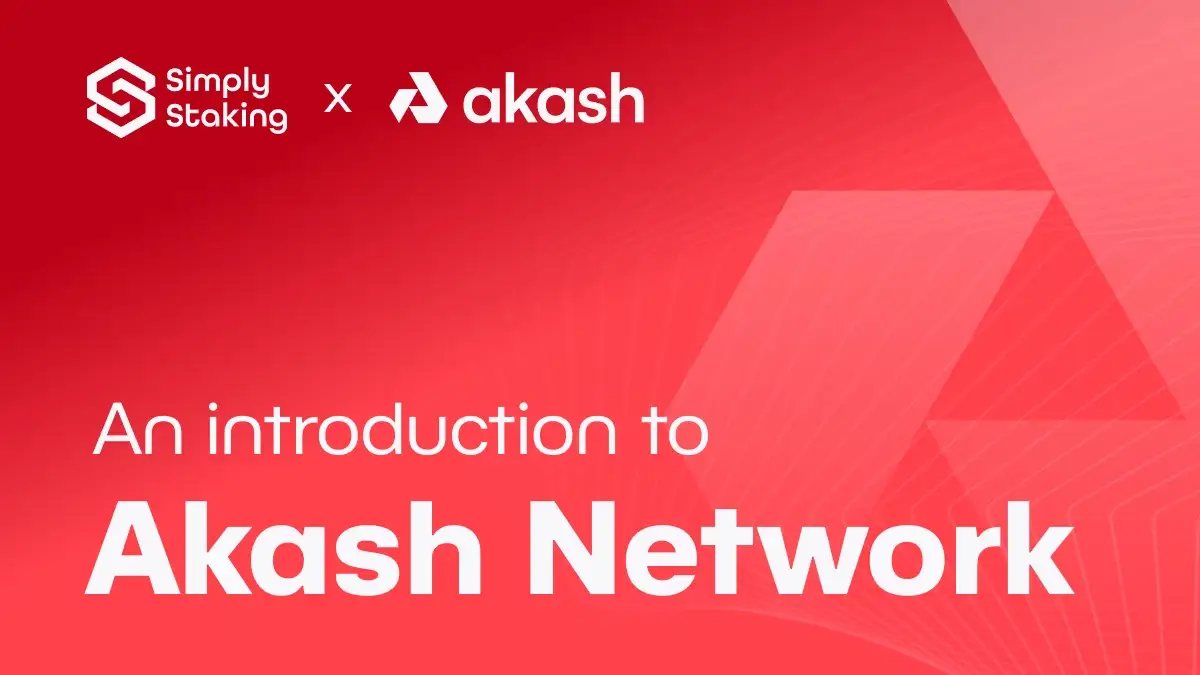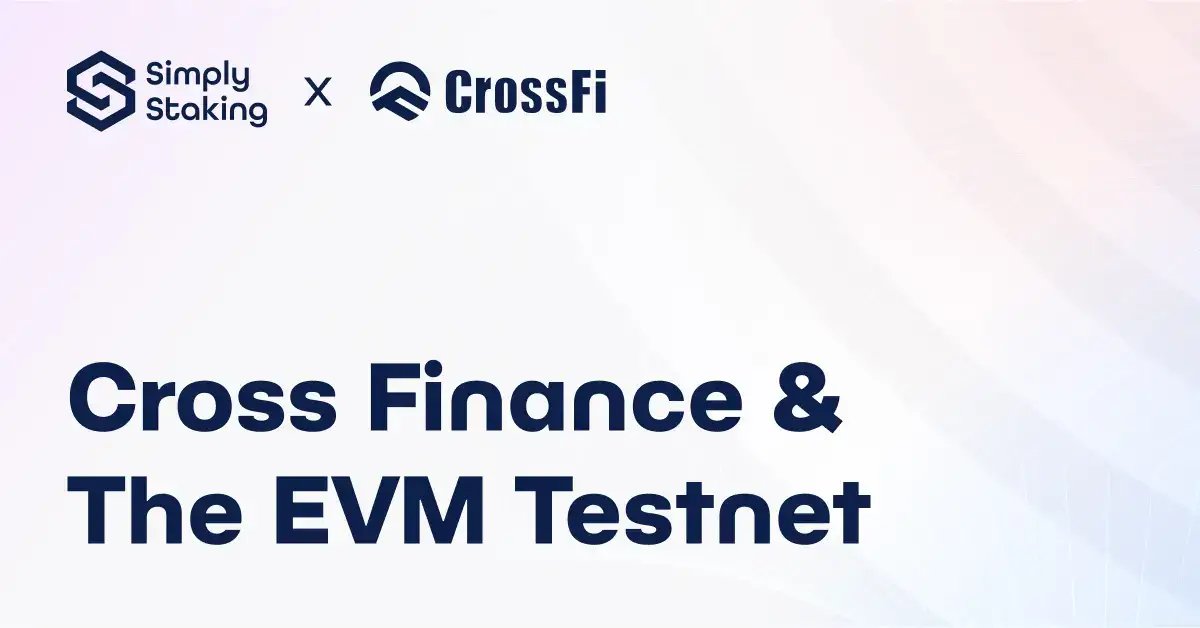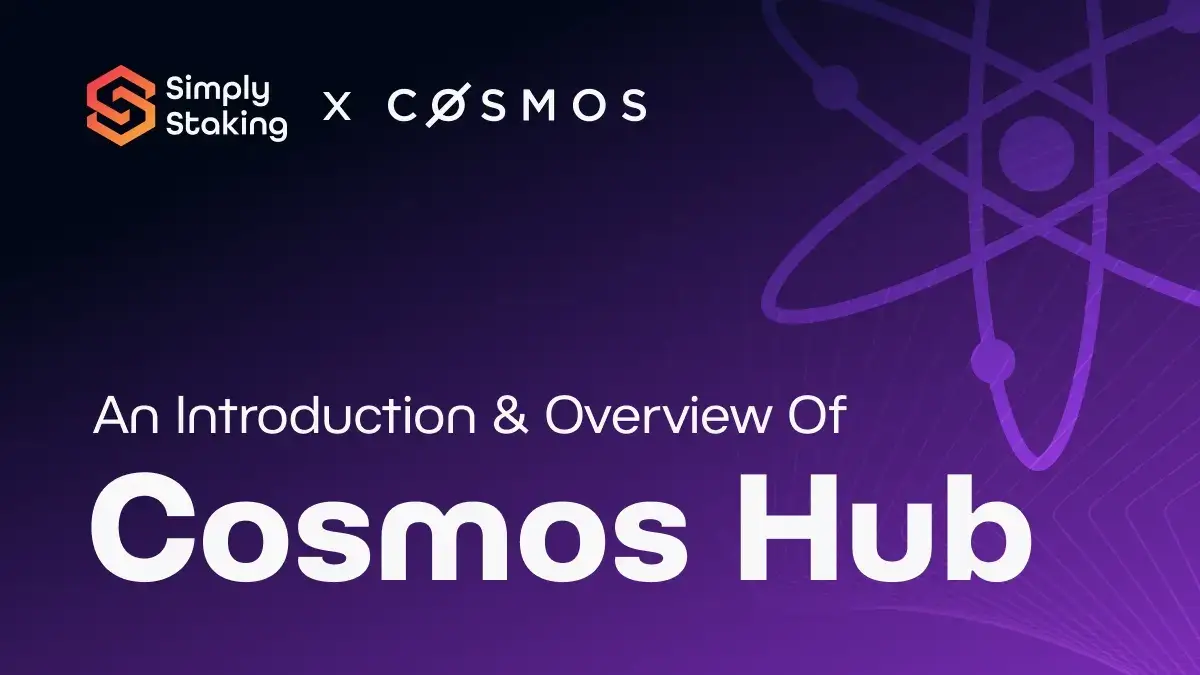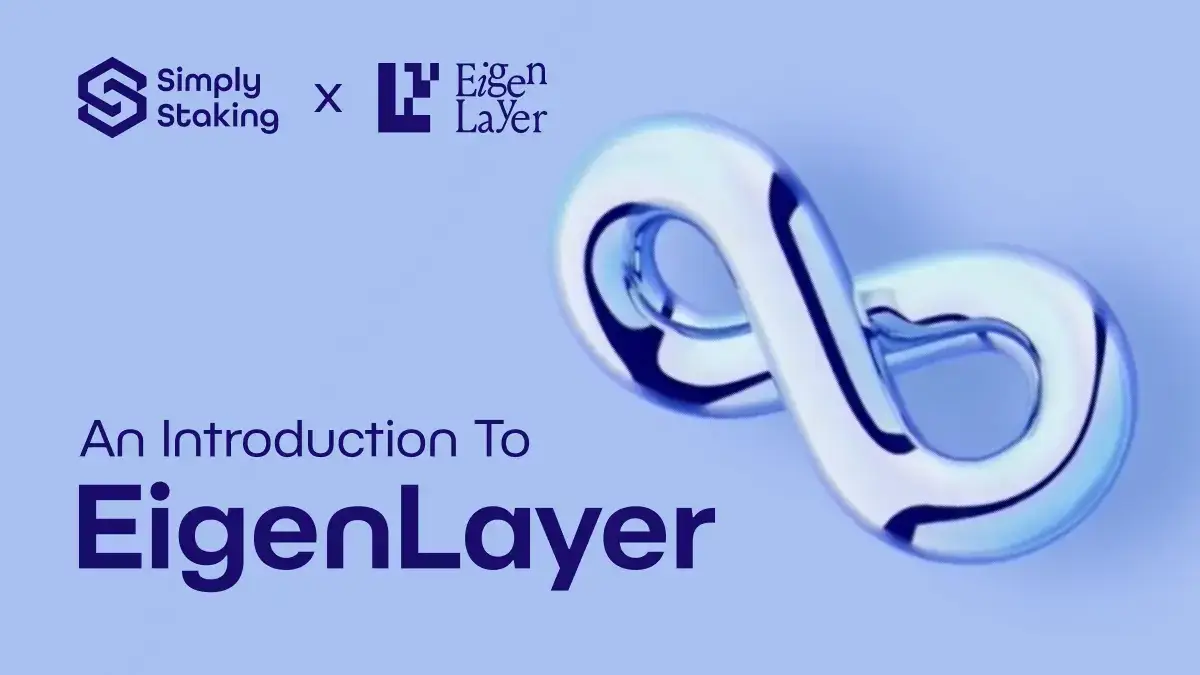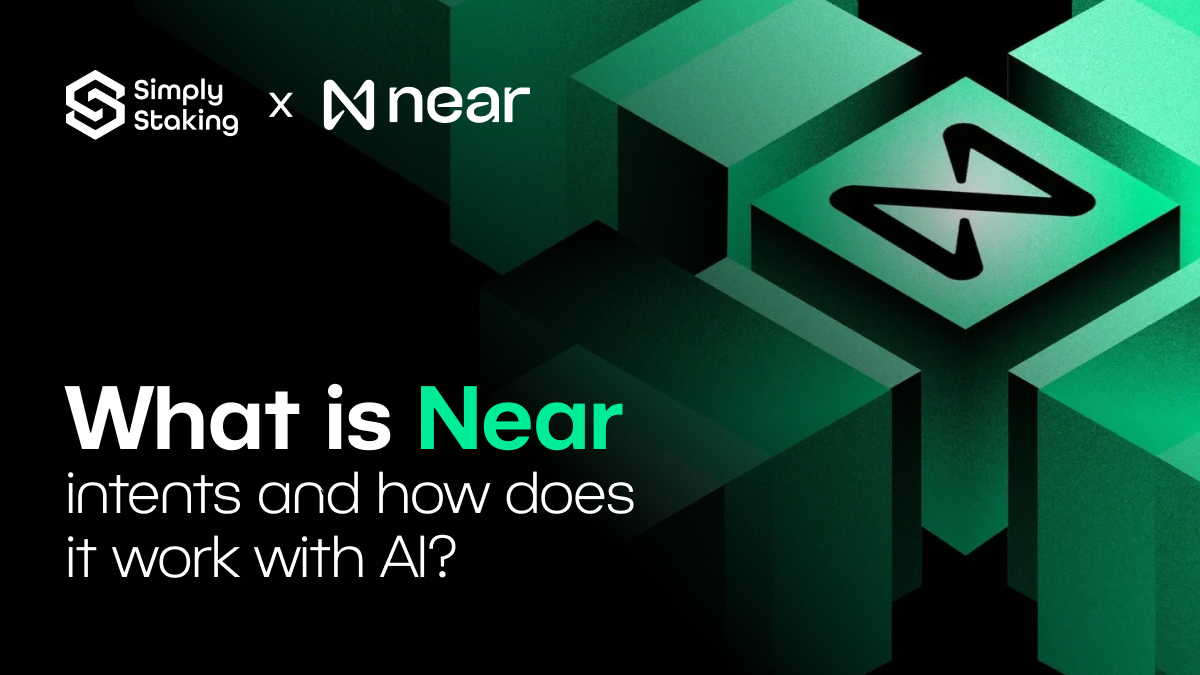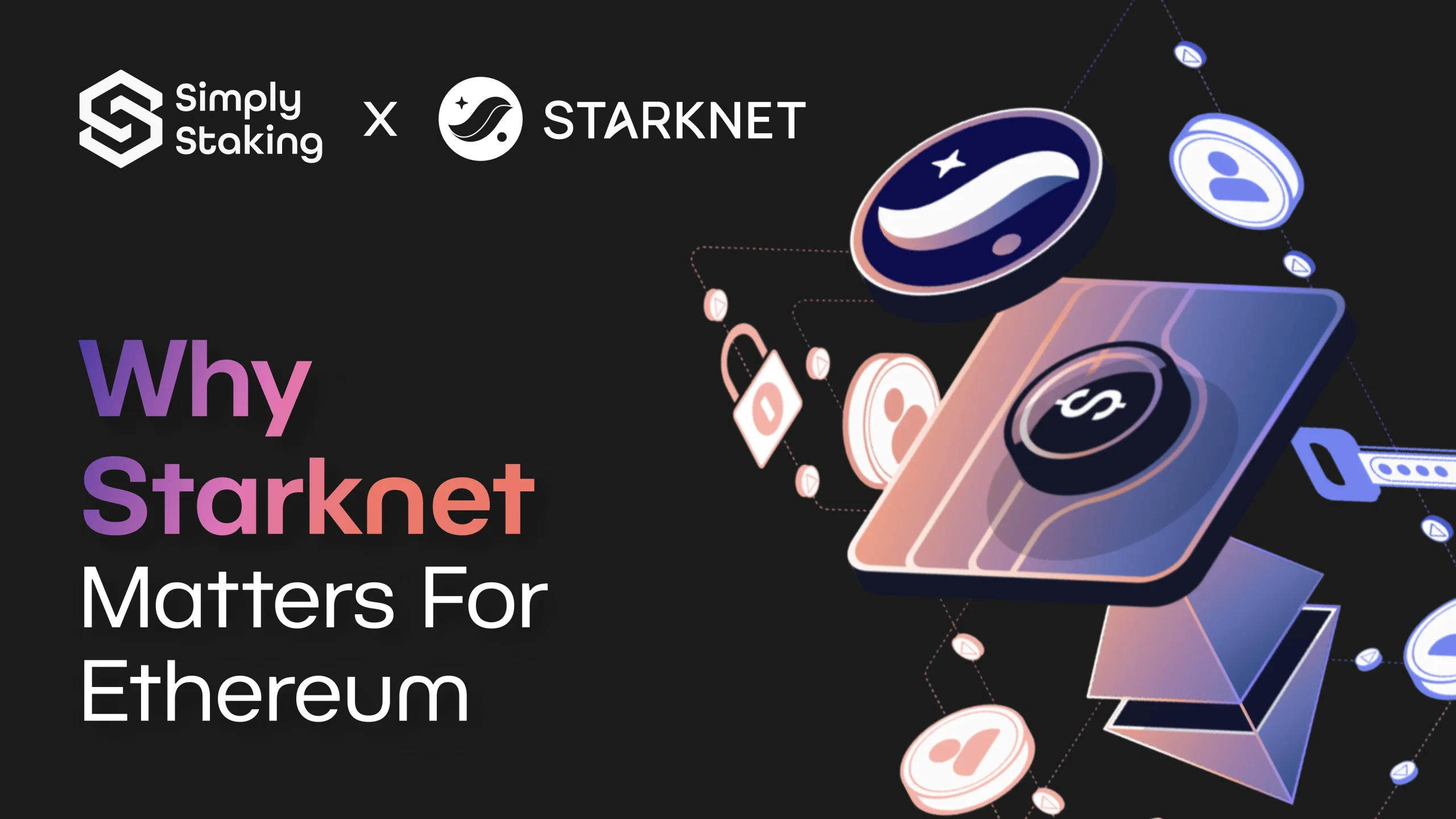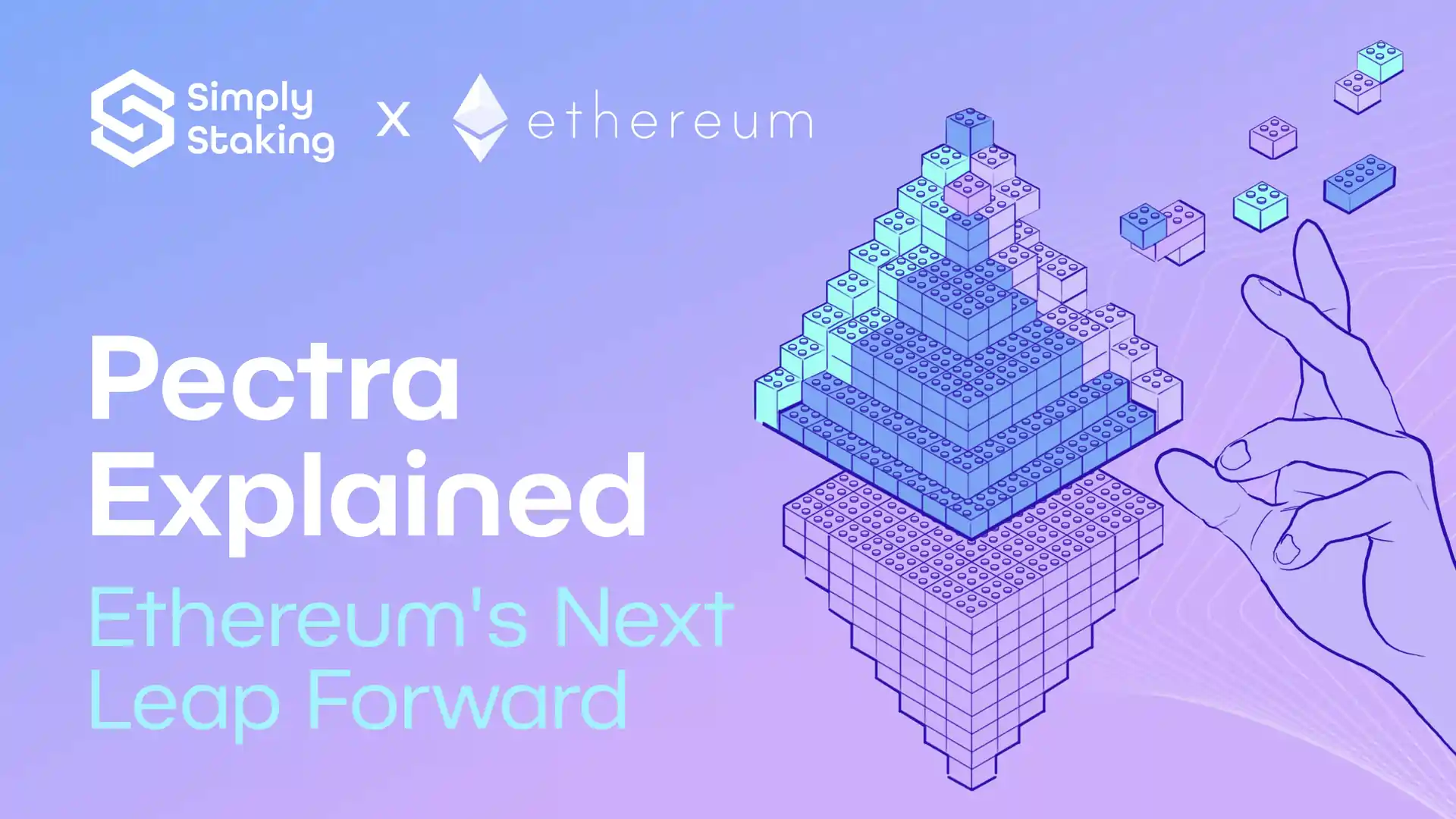Introduction
Over the past decade, blockchain technology has evolved from a novel idea for peer-to-peer digital money into a diverse ecosystem of decentralized platforms and applications. As adoption has grown, so too have the demands on these networks. Scalability, interoperability, and governance have become central challenges. A blockchain that cannot scale will struggle to support global use cases. One that cannot interoperate risks isolation. And without effective governance, long-term sustainability becomes uncertain. Among the platforms leading the charge to address these issues, Ethereum and Polkadot stand out.
Ethereum pioneered the concept of a general-purpose smart contract platform, enabling developers to build decentralized applications far beyond simple transactions. Its influence is undeniable, and most of today’s blockchain innovation traces back in some way to Ethereum’s programmable model.
Polkadot, on the other hand, introduced another paradigm: a multichain architecture designed for interoperability and specialization. Instead of one monolithic blockchain, Polkadot connects many purpose-built chains (parachains) into a coordinated network. This approach aims to overcome the limitations of siloed ecosystems.
In this article, we will explore Polkadot’s latest evolution, JAM (Join-Accumulate Machine). JAM represents a shift toward a more modular, efficient, and sustainable execution model. We will explore how JAM builds on Ethereum’s smart contracts and Polkadot’s multichain relay chain, showing how JAM evolves both paradigms into a new model. Before we compare Ethereum to Polkadot JAM, let’s first understand what JAM is and how it redefines Polkadot’s architecture.
What is Polkadot JAM?
Polkadot JAM, short for Join-Accumulate Machine, is the next evolution of the Polkadot protocol. First introduced in the Graypaper by Gavin Wood, JAM reimagines Polkadot’s core architecture as a more flexible and efficient foundation for decentralized computation. Where the current relay chain is tailored specifically to coordinating parachains, JAM extends this idea into a general-purpose computation platform.
At its heart, JAM envisions Polkadot as a trustless, multicore supercomputer. It becomes a parallel system where independent processes run simultaneously, coordinated by validators This creates a foundation where developers can deploy and execute logic in a modular, scalable way while still benefiting from Polkadot’s security model. Understanding JAM at a high level helps clarify its core principles and the advantages it brings over traditional blockchain designs.
Core Concept of JAM
The essence of JAM lies in its redefinition of what a blockchain network can be. Rather than functioning solely as a coordinator of parachains, JAM is designed as a general-purpose computation system. This means it is not limited to managing specific forms of execution logic but can serve as a universal framework where many types of decentralized applications and runtimes coexist.
At a high level, JAM turns Polkadot into a trustless, multicore supercomputer. Much like a modern processor distributes workloads across multiple cores, JAM enables the network to execute many independent processes in parallel. These processes are validated collectively by the network’s validators, ensuring security and consistency without requiring a single, centralized point of control.
This approach provides several key advantages:
- Flexibility: Developers are free to define their own execution environments, whether for financial applications, data services, or experimental runtimes.
- Parallelism: Workloads can be distributed across many processes, removing the bottlenecks of single-threaded execution.
- Shared Security: Every application benefits from Polkadot’s validator set and consensus model, without needing to bootstrap its own trust network.
By abstracting Polkadot into a general-purpose machine, JAM offers a simplified yet more powerful architecture. It lays the groundwork for a unified computational fabric that supports diverse applications. The design choices that make this vision possible are guided by several key principles.
Driving Factors
The JAM design is guided by several principles that address long-standing challenges in blockchain systems:
- Resilience: The system must remain robust in the face of failures or attacks, ensuring continuous operation without central points of weakness.
- Generality: JAM is not bound to a single use case. It can host a wide variety of decentralized applications and runtimes, extending far beyond parachains.
- Performance: By distributing workloads across a parallelized environment, JAM aims to achieve far higher throughput than traditional single-threaded blockchains.
- Coherency: JAM balances the tension between storing large amounts of data and keeping participants synchronized, achieving both scalability and consistency.
- Accessibility: JAM lowers the barrier for developers and participants by making the system easier to interact with, whether for building applications, running validators, or simply using decentralized services.
Through these principles, JAM is designed as both a simplification and an expansion of Polkadot’s relay chain. It strips away specialized assumptions while opening the door to a more versatile and enduring foundation for decentralized computation. These principles inform JAM’s architecture, which we can now examine in more detail.
How JAM Works
At its core, JAM is designed to make Polkadot function more like a distributed computer than a single-purpose blockchain. Instead of one chain coordinating many parachains, JAM provides a flexible environment where multiple processes can run in parallel, all secured by the same validator set.

???? Polkadot Virtual Machine (PVM) = CPU cores
Executes instructions in parallel, running blockchain services and pipelined tasks.
???? D3 Lake = Cache
Provides ultra-fast data access and schedules concurrent instructions efficiently.
???? Blockchain = System RAM
Stores the finalized state and enables cross-chain messaging across subsystems.
The Join–Accumulate Principle
The name “JAM” reflects its process: Join brings together many independent tasks, and Accumulate merges their results into a single state. This makes JAM capable of running workloads in parallel, much like a multicore processor.
Subsystems Instead of Parachains
JAM introduces subsystems, which replace the older parachain model. These are autonomous modules that can define their own logic but still interoperate within the network. A subsystem might be an application runtime, a data layer, or another specialized service — and all of them benefit from Polkadot’s shared security.
Execution in Parallel
With JAM, many subsystems can compute at the same time, instead of competing for space in a single global execution layer. Validators still verify the results to keep the system secure, but they do not dictate how applications are built. This opens the door to more flexibility, scalability, and innovation.
Comparing Ethereum, Polkadot and JAM
Ethereum, Polkadot and JAM share a common goal: to provide a scalable, secure, and decentralized foundation for applications. Each recognize that a single monolithic blockchain cannot meet the growing demands of Web3. Instead, they are pursuing modular architectures where execution, consensus, and data availability can evolve independently. However, despite this shared vision, their approaches are distinct.
| ETH | DOT | JAM | |
| Architecture | Moving from monolithic toward modular (with rollups) | Relay chain + parachains | Natively Modular subsystems |
| Execution Environment | EVM + WASM | Parachains with custom runtimes | PVM + RISC-V |
| Execution Model | Single global execution environment | Isolated parachains | Parallel subsystems (isolated yet composable) |
| Governance | Token-based, off-chain coordination | On-chain governance | Fully integrated on-chain governance |
| Interoperability | Limited, mostly through external bridges | Native interoperability via relay chain | Native interoperability across all subsystems |
Key Takeaways
- Architecture: Ethereum is evolving toward modularity through rollups. Polkadot advanced modularity with parachains coordinated by the relay chain. JAM takes the concept further by introducing subsystems as native, self-contained modules without relay chain bottlenecks.
- Execution Environment: Ethereum runs on the EVM and increasingly supports WASM. Polkadot allows parachains to define custom runtimes. JAM introduces the Polkadot Virtual Machine (PVM), a RISC-V–based environment that supports diverse runtimes and executes them in parallel across subsystems.
- Execution Model: Ethereum relies on a single global execution environment. Polkadot coordinates execution across parachains through the relay chain. JAM distributes execution fully in parallel across subsystems, which are isolated yet composable.
- Governance: Ethereum relies heavily on off-chain discussions and social consensus. Polkadot brought on-chain governance for upgrades. JAM embeds governance into the protocol itself, providing adaptability while reducing the risk of ossification.
- Interoperability: Ethereum’s interoperability is mostly limited to bridges. Polkadot allows communication between parachains via the relay chain. JAM provides native interoperability across subsystems and can also interact with Ethereum through secure channels.
Each network is aiming for scalability and flexibility, but they are following different architectural paths. Ethereum builds outward from its monolithic foundation, while JAM starts with modularity at its core.
How JAM Builds on Lessons from Ethereum and Polkadot
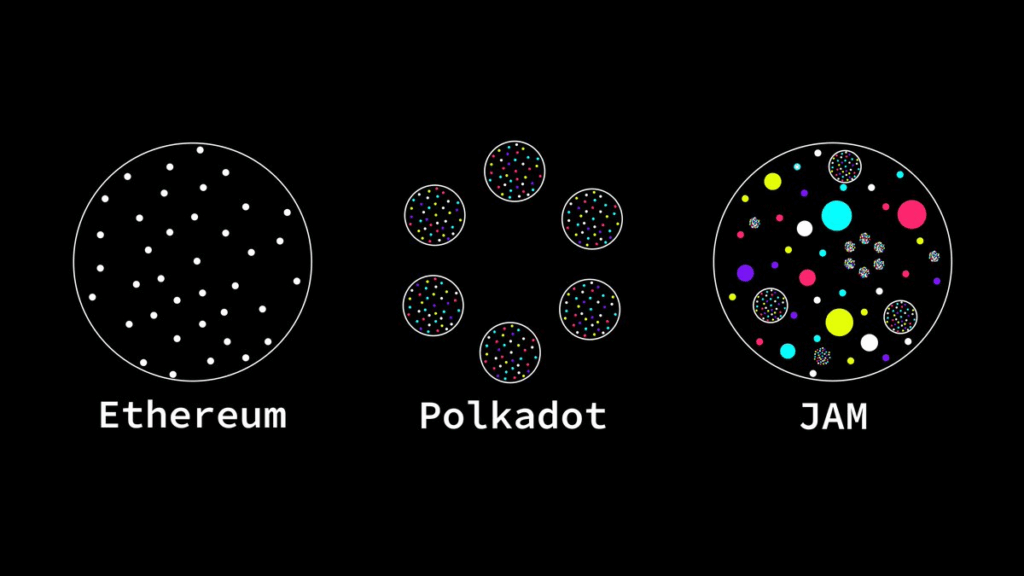
Ethereum has been the pioneer of general-purpose computation in blockchain. It introduced smart contracts, inspired an entire ecosystem of decentralized applications, and continues to push innovation through its transition to proof of stake and its modular roadmap. However, the Ethereum community has also discovered limits to its original design. High gas fees, execution bottlenecks, and slow protocol upgrades have pushed Ethereum toward rollups and off-chain governance.
Polkadot addressed some of Ethereum’s limitations by introducing a multichain architecture. Its relay chain coordinates multiple parachains, allowing specialized blockchains to interoperate securely while sharing the same validator set. This design improved scalability, modularity, and governance compared with a monolithic chain. However, the relay chain imposed constraints: all parachains had to follow its scheduling and validation rules, heavy workloads on one parachain could affect the entire network, and protocol upgrades were largely tied to relay chain governance. While effective, this coordination layer constrained parallel execution, limited flexibility, and made it harder for individual parachains to adopt experimental runtimes.
JAM builds on both of these paradigms. It adopts Ethereum’s vision of general-purpose computation while integrating Polkadot’s multichain architecture, but it takes modularity and parallelism further. Subsystems in JAM are native, fully parallelized, and interoperable, removing the bottlenecks of both Ethereum’s monolithic execution and Polkadot’s relay-chain coordination. Governance is embedded directly in the protocol, reducing ossification, and the Polkadot Virtual Machine (PVM) provides a flexible, RISC-V–based execution environment for secure, efficient computation.
In short, JAM represents the next step in blockchain evolution: it learns from Ethereum’s general-purpose computation, extends Polkadot’s multichain architecture, and combines both into a scalable, modular, and interoperable platform for the future of Web3.
Potential for Interoperability
JAM builds interoperability into its core. Subsystems can communicate and coordinate without relying on external bridges, allowing specialized runtimes to work together seamlessly.
This opens the door for future integrations where Ethereum applications could leverage JAM’s parallel execution, and Polkadot-based projects could interact with Ethereum through secure channels. The result is not a rivalry but an opportunity for complementarity. Ethereum provides the largest ecosystem of developers and applications, while JAM offers a natively modular architecture that prioritizes secure interoperability. Together, they could help form the backbone of a more connected, multichain Web3.
Why JAM Matters for the Future of Web3
JAM represents a significant step in the evolution of blockchain architecture. By combining modularity, parallel execution, and native interoperability, it addresses many of the challenges that today’s networks face, including scalability, flexibility, and protocol ossification.
For developers, JAM opens new possibilities for building specialized applications without being constrained by a single global runtime. For networks, it offers a framework where multiple subsystems can coexist securely and interact seamlessly. And for the broader Web3 ecosystem, JAM demonstrates a path toward a more interconnected, multi-chain future.
In short, JAM is not just an upgrade to Polkadot. It is a blueprint for what blockchains can become: a flexible, efficient, and cooperative computational fabric capable of supporting the next generation of decentralized applications.
Conclusion
The future of Web3 may not belong to a single blockchain but to a connected ecosystem of complementary networks. JAM shows how Polkadot can lead in modularity, parallel execution, and interoperability, while Ethereum continues to drive smart contract innovation. Together, they point toward a multi-chain future where networks collaborate, experiments flourish, and decentralized applications can scale without compromise.









